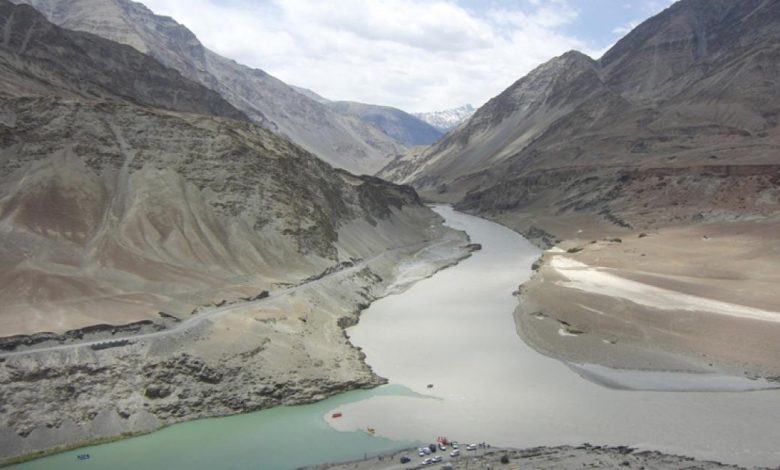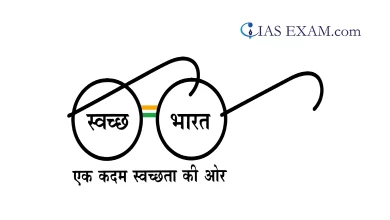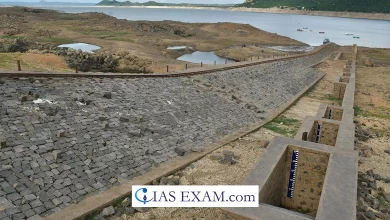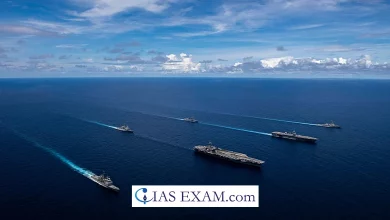Indus Water Treaty (IWT) and its Disputes
[GS Paper 2 - India’s Relation with its Neighborhood]

Context – India’s January 25 notice to Islamabad seeking modification of the 1960 Indus Waters Treaty is the fallout of a longstanding dispute over two hydroelectric power projects on the western rivers, the fully operational Kishenganga on the Jhelum, and Ratle on the Chenab.

What is IWT?
- The Indus Waters Treaty is a water-distribution treaty between India and Pakistan, brokered by the World Bank signed in Karachi in 1960.
- According to this agreement, control over the water flowing in three eastern rivers of India the Beas, the Ravi and the Sutlej was given to India.
- The control over the water flowing in three western rivers of India the Indus, the Chenab and the Jhelum was given to Pakistan.
Objectives of the Treaty
- Equitable water-sharing – Back in time, partitioning the Indus rivers system was inevitable after the Partition of India in 1947.
- Empathizing the Partition – The sharing formula devised after prolonged negotiations sliced the Indus system into two halves.
- Water does not recognize borders – Underlying the treaty is the principle that water does not recognise international boundaries and upper riparians have a responsibility to lower riparians.
Issues and Challenges
- In 2016, Pakistan had approached the World Bank raising concerns of India’s Kishenganga and Ratle hydroelectric power projects being constructed in Jammu & Kashmir. India then requested for neutral experts to inspect the plants, saying that the points raised by Pakistan were technical ones and do not require a court of arbitration (as Pakistan has taken it to an arbitration court). The World Bank permitted India to proceed with the projects after talks were concluded between both the countries on the technicalities of the treaty.
- The Tulbul project (which is a navigation lock-cum-control structure at the mouth of the Wular Lake, situated on the Jhelum from Anantnag to Srinagar and Baramulla) was suspended in 1987 after Pakistan objected to it. Recently, the government decided to review this suspension without taking into account Pakistan’s protests.
- Pakistan’s Left Bank Outfall Drain (LBOD) project passes through the Rann of Kutch in India’s Gujarat. The project was constructed without India’s consent. India has objected because this is in contravention to the IWT. The lower riparian state is in India and hence it needs to be given all details. There is also the danger of flooding in the state of Gujarat.
- Recently, the bilateral relations between India and Pakistan have taken on a downward spiral. In the wake of the Uri attacks on India, Prime Minister Modi remarked that blood and water cannot flow simultaneously indicating to Pakistan that its support to terrorism across the border will lead to India rethinking its generous stance on the IWT. Indeed, many experts believe that the treaty is more favorable towards Pakistan than India.
Significance of the Treaty
- Testimonial to peaceful coexistence – It is a treaty that is often cited as an example of the possibilities of peaceful coexistence that exist despite the troubled relationship. The IWT is the only agreement between India and Pakistan that has stood the test of time, through wars and terrorism.
- Survived many hostilities – It has survived 3 crucial wars.
- Most successful bilateral treaty – It is internationally regarded as an example of successful conflict resolution between two countries otherwise locked in a hostile relationship.
Way Forward for both Countries
- While the treaty does provide for modification from time to time, it has to do so by means of a duly ratified treaty concluded for that purpose between the two Governments.
- More likely, the issue will fester and grow into another active pressure point in India-Pakistan relations.
- On the Pakistani side, accusations are made with increasing frequency that India has turned off the water, and on this side, the view is growing that India has been too generous in the IWT.
- Prime Minister Narendra Modi’s remark in the aftermath of the 2016 Uri attack that “blood and water cannot flow together”, even though how this threat might be implemented is not clear as it would be plain dangerous to build big dams to stop the western rivers from flowing across the LoC in a seismologically active region.
Conclusion
Experts opine that India should use the waters of the western rivers as permitted by the IWT. This alone can send a strong signal to Pakistan. A lot should be thought over before any other drastic steps are taken, as they can have lasting effects on the relationship with Pakistan. Using water as a weapon is never a good idea. It would be so much better for both countries to treat the IWT as an instrument for collaboration on climate action in the fragile Himalayan region.





.png)



